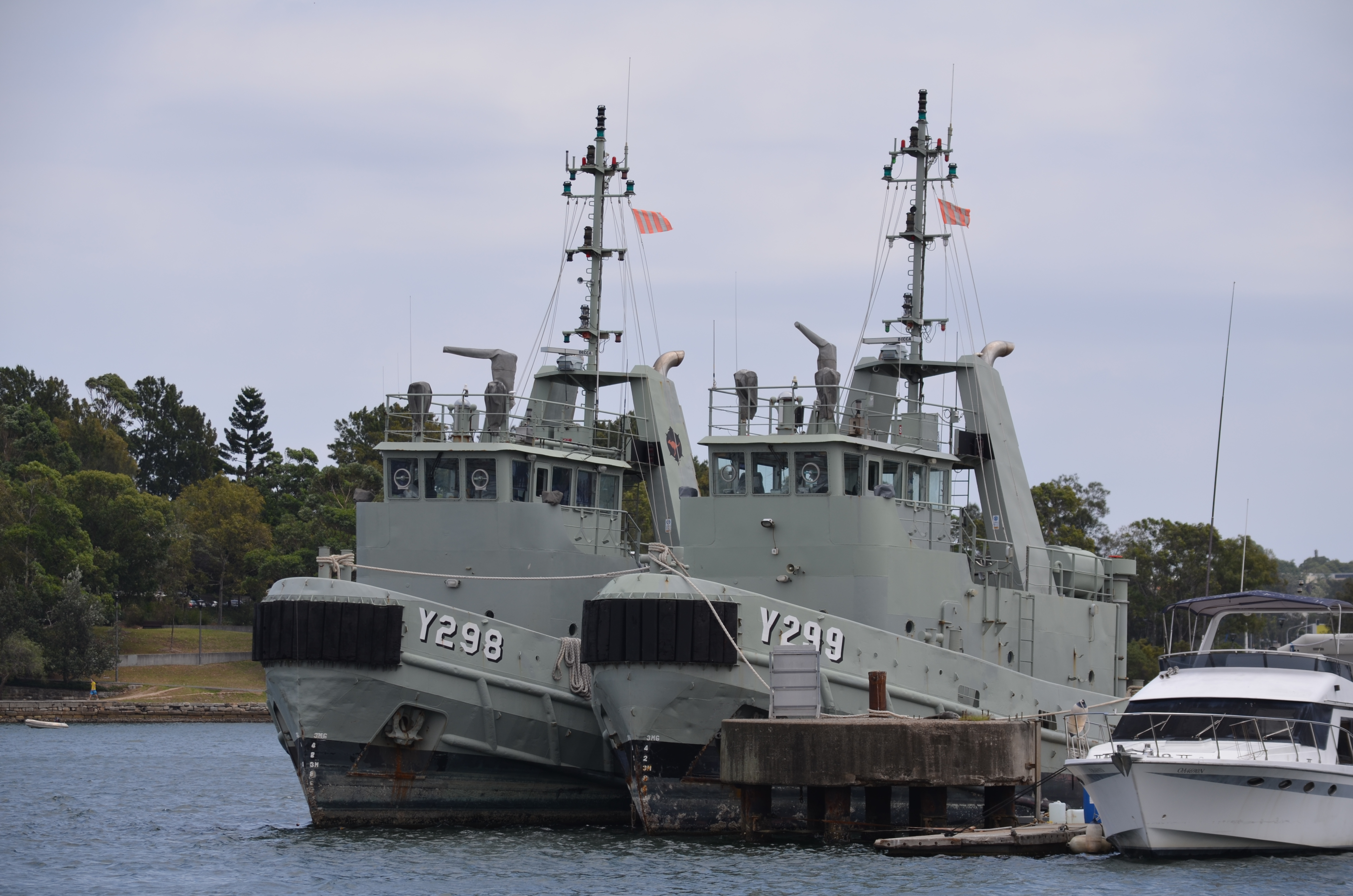MSA Bandicoot (Y 298) on:
[Wikipedia]
[Google]
[Amazon]
The ''Bandicoot'' class was a ship class of two minesweeper tugboats operated by the Royal Australian Navy (RAN). MSA ''Bandicoot'' (Y 298) and MSA ''Wallaroo'' (Y 299) were built in 1982 for Maritime (PTE) Ltd. as the tugboats ''Grenville VII'' and ''Grenville V''. In 1990, the RAN purchased the vessels for conversion into auxiliary minesweepers under the
 In 2008, it was predicted that both ships would leave service in 2012. On 1 October 2010, both vessels were placed in reserve, able to be reactivated in 30 days and able to deploy in 42. Although no longer used for minesweeping operations, the tugboats were deployed on several occasions to provide berthing support for visiting nuclear-powered warships.Gillett, ''Australia's Navy'', p. 45 By December 2012, their projected end-of-service date had been pushed back to early 2013. The 2015-2016 edition of '' Jane's Fighting Ships'' lists the two vessels as having been deleted sometime in 2014.Saunders & Philpott (eds.), ''IHS Jane's Fighting Ships 2015-2016'', p. 25
In 2008, it was predicted that both ships would leave service in 2012. On 1 October 2010, both vessels were placed in reserve, able to be reactivated in 30 days and able to deploy in 42. Although no longer used for minesweeping operations, the tugboats were deployed on several occasions to provide berthing support for visiting nuclear-powered warships.Gillett, ''Australia's Navy'', p. 45 By December 2012, their projected end-of-service date had been pushed back to early 2013. The 2015-2016 edition of '' Jane's Fighting Ships'' lists the two vessels as having been deleted sometime in 2014.Saunders & Philpott (eds.), ''IHS Jane's Fighting Ships 2015-2016'', p. 25
Craft of Opportunity Program
The Craft of Opportunity Program (COOP) was a Royal Australian Navy
The Royal Australian Navy (RAN) is the principal naval force of the Australian Defence Force (ADF). The professional head of the RAN is Chief of Navy (CN) Vice Admiral Ma ...
(COOP). The vessels could be equipped with a sidescan sonar and various towed minesweeping arrays, and also functioned as berthing tugs. Both vessels were placed in reserve in 2010, but were deployed on several occasions since to provide berthing support to nuclear-powered warships. They were removed from naval service in 2014.
Design and construction
''Bandicoot'' and ''Wallaroo'' were built by Mipe Shipbuilding for Singaporean company Maritime (PTE) Ltd. as the tugboats ''Grenville VII'' and ''Grenville V'', and entered service in 1982.Saunders (ed.), ''Jane's Fighting Ships 2008-2009'', p. 32 The two tugboats were purchased by the RAN for theCraft of Opportunity Program
The Craft of Opportunity Program (COOP) was a Royal Australian Navy
The Royal Australian Navy (RAN) is the principal naval force of the Australian Defence Force (ADF). The professional head of the RAN is Chief of Navy (CN) Vice Admiral Ma ...
(COOP) on 3 and 8 August 1990, and were delivered on 11 August 1990. The tugboats underwent conversion to serve as auxiliary minesweepers, with modifications completed by mid-1991.
Each vessel displaced 412 tonnes at full load, was in length, had a beam of , and a draught of . Propulsion machinery consisted of two Stork Werkspoor diesel engines, each connected to a propeller shaft. Maximum speed was , and range was at . They were equipped with a Furuno 7040D I-band navigational radar. The ships initially had a towing capacity rated at a bollard pull of 30 tons, but this was removed during the COOP conversion. Ten to twelve personnel were required to operate each ship.Wertheim (ed.), ''The Naval Institute Guide to Combat Fleets of the World'', p. 23
Role and operational history
''Bandicoot'' and ''Wallaroo'' were primarily operated as a supplementary minesweeping force. In this role, they were equipped with a Klein Type 590 sidescan sonar array, along with a Mini-Dyad magnetic influence sweep array, an AMASS influence sweep array, or mechanical minesweeping gear. The vessels were also used as berthing tugs, primarily for foreign warships. From 1999 to 2001, ''Bandicoot'' and ''Wallaroo'' were involved in Operation Bel Isi, the Australian commitment to the BougainvillePeace Monitoring Group
The Peace Monitoring Group (PMG) on Bougainville in Papua New Guinea was brought about by the civil unrest on the island in 1989. The PNG government requested the Australian and New Zealand governments to provide a monitoring group to oversee the ...
.Gillett, ''Australia's Navy'', p. 44
Citations
References
* * * * {{Bandicoot-class minesweeper Mine warfare vessel classes